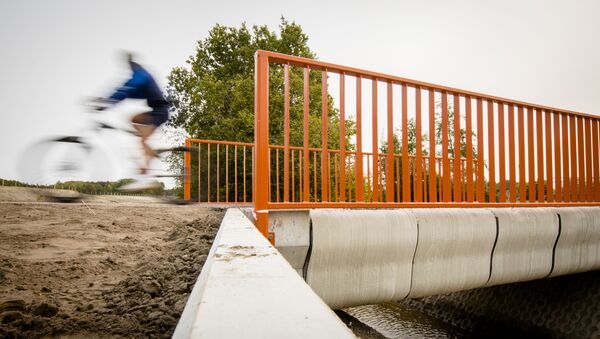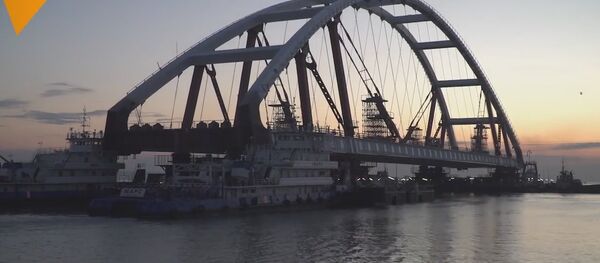A unique bridge, which is said to be the world's first 3D-printed crossing for cyclists, was unveiled in the small Dutch town of Gemert on October 17. Designed and built in about three months by a team of engineers from the Eindhoven University of Technology and the construction company BAM Infra, the bridge was printed in pieces from 800 layers of a concrete mixture and reinforced with steel cable.
"The bridge is not very big, but it was rolled out by a printer, which makes it unique," Theo Salet of the Eindhoven University of Technology told Dutch news broadcaster NOS. Eight meters long and just three and a half meters wide, the bridge can handle a weight of up to five metric tons and is expected to last for at least 30 years.
The rightful title of first-ever 3D-printed bridge belongs to another crossing, which was installed in the urban park of Castilla-La Mancha in Alcobendas, Madrid, Spain in December 2016. The pedestrian bridge, designed by the Institute of Advanced Architecture of Catalonia and made up of eight separate 3D-printed parts, spans 12 meters and measures just 1.75 meters in width.





